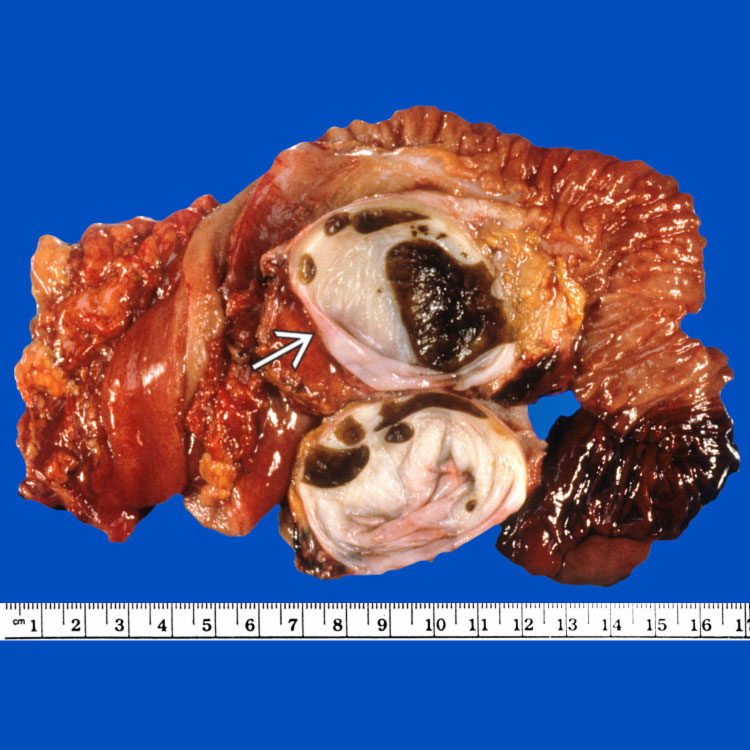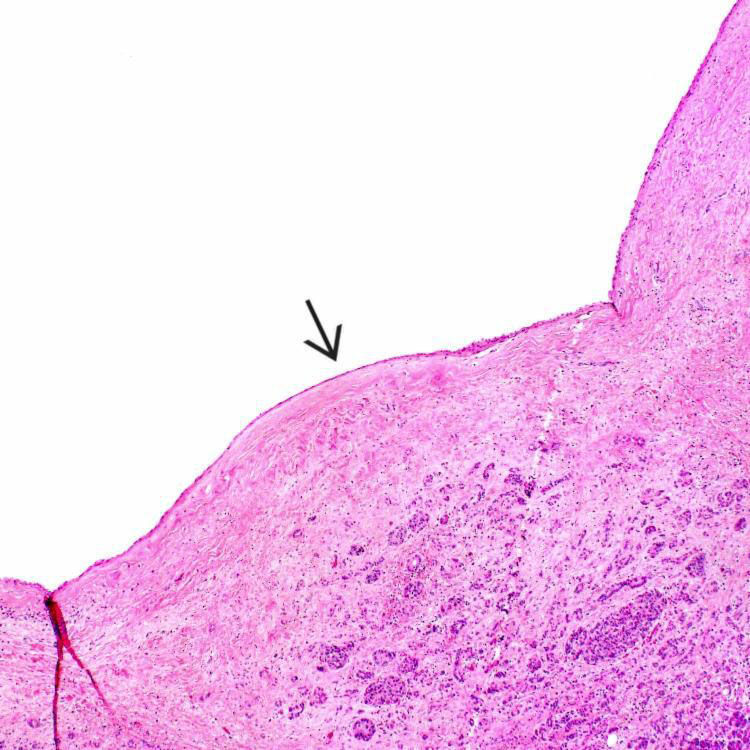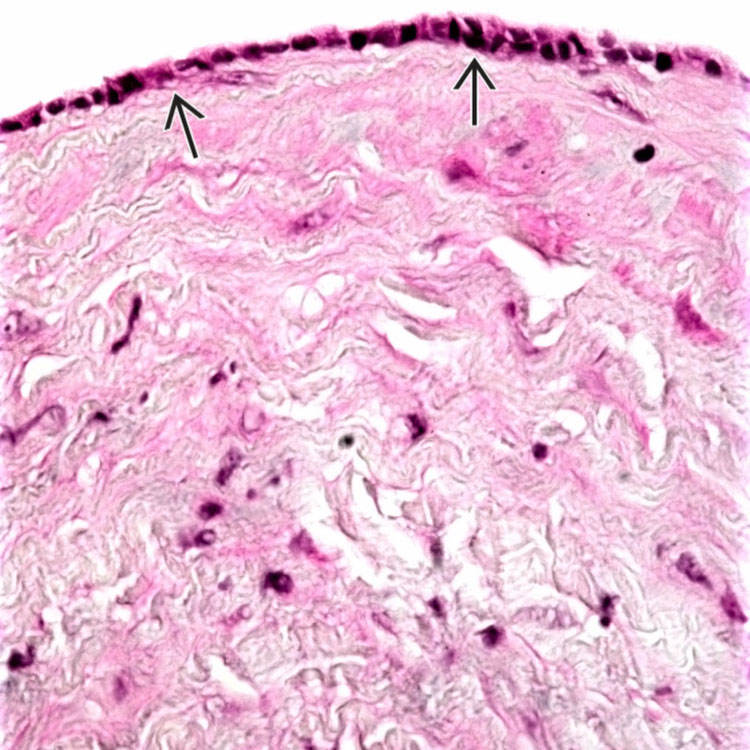Presumably due to failure of embryonic pancreatic ducts to regress, when they are replaced by permanent ones, that leads to their obstruction and cyst formation in utero
 May be associated with other congenital anomalies, such as von Hippel-Lindau disease, polycystic kidney disease, etc.
May be associated with other congenital anomalies, such as von Hippel-Lindau disease, polycystic kidney disease, etc.Top Differential Diagnoses

The enlarged pancreatic head mass was bisected to reveal a unilocular cyst
 that did not communicate with the pancreatic duct. The thin fibrous cyst wall is smooth with focal areas of hemorrhage.
that did not communicate with the pancreatic duct. The thin fibrous cyst wall is smooth with focal areas of hemorrhage.
This low-power view of a congenital pancreatic cyst shows a unilocular cyst lined by a single layer of attenuated epithelium
 . The cyst wall is fibrotic.
. The cyst wall is fibrotic.
The cystic space in a congenital pancreatic cyst is typically lined by a single layer of flattened, cuboidal or columnar nonmucinous epithelium
 , similar to that seen in benign pancreatic ducts.
, similar to that seen in benign pancreatic ducts.TERMINOLOGY
Synonyms
Definitions
• Rare, benign, congenital, epithelial-lined intrapancreatic cyst that does not communicate with ductal system
Stay updated, free articles. Join our Telegram channel

Full access? Get Clinical Tree






 .
.